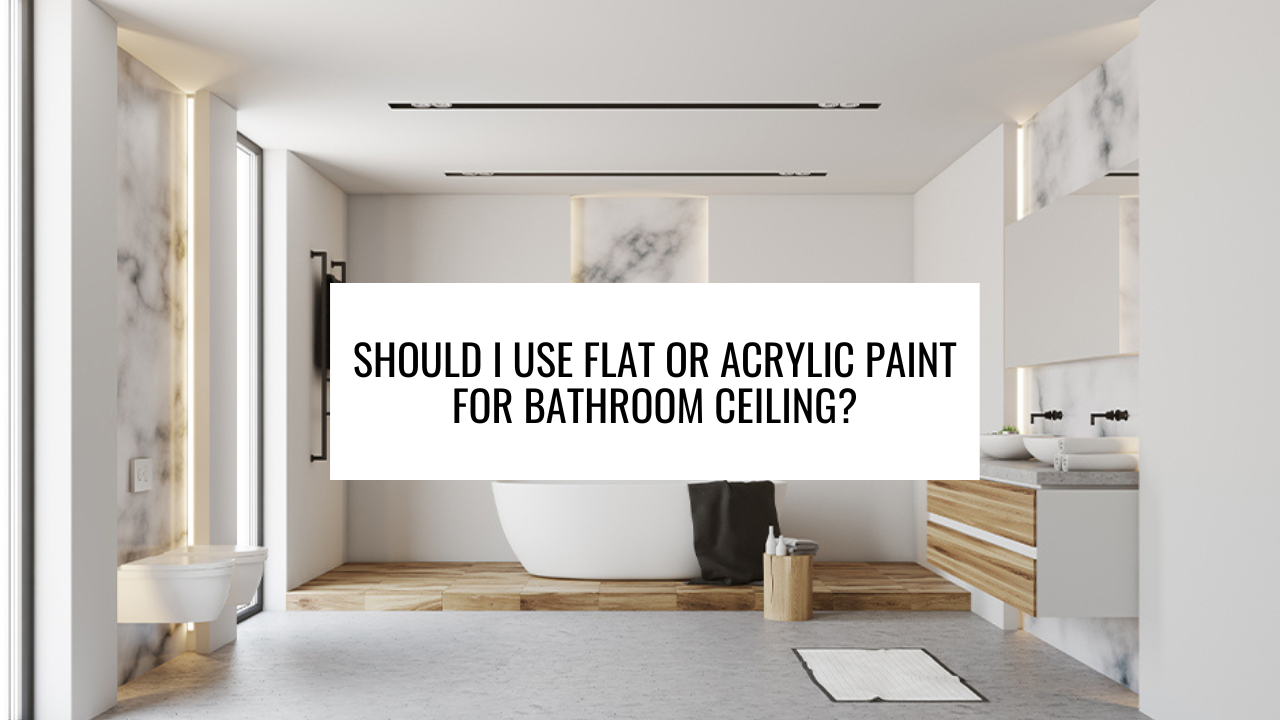When it comes to painting your bathroom ceiling, choosing the right type of paint is crucial to ensure not only a visually appealing result but also long-lasting durability. Among the most common choices are flat and acrylic paints. Each has its own set of characteristics, advantages, and drawbacks. In this blog post, we’ll delve into the debate of whether you should use flat or acrylic paint for your bathroom ceiling, so you can make an informed decision for your home improvement project.
Flat Paint: Aesthetic Appeal with Trade-offs
Flat paint, also known as matte paint, is popular for its smooth and non-reflective finish. It helps to mask imperfections and surface irregularities, making it an attractive choice for ceilings. In bathrooms, where lighting conditions can vary and moisture is a concern, flat paint can provide a soft and even appearance that’s easy on the eyes.
However, there are drawbacks to using flat paint on a bathroom ceiling. One significant concern is its susceptibility to water and humidity. Bathrooms are high-moisture environments, and flat paint tends to absorb moisture more readily than other types of paint. Over time, this can lead to peeling, cracking, and the growth of mildew, which is not only unattractive but also potentially harmful to your health.
Acrylic Paint: Durability Meets Versatility
Acrylic paint, on the other hand, is a water-based paint that offers better durability and moisture resistance compared to flat paint. It forms a protective layer on the ceiling, making it more resistant to water damage, stains, and mildew growth. Acrylic paint is easy to clean, and it maintains its color and finish over time, even in humid environments like bathrooms.
Furthermore, acrylic paint comes in various sheens, including satin and semi-gloss, which can provide a slight reflective quality. This can enhance the overall brightness of your bathroom by reflecting light, making the space feel larger and more inviting.
Choosing the Right Paint for Your Bathroom Ceiling
When deciding between flat and acrylic paint for your bathroom ceiling, consider the following factors:
- Moisture Levels: If your bathroom experiences a lot of moisture due to showers and baths, acrylic paint is the better choice due to its superior water resistance.
- Durability: If you want a long-lasting finish that can withstand the test of time, acrylic paint’s resilience against moisture, stains, and mildew makes it a more suitable option.
- Aesthetics: If you prioritize a smooth and non-reflective appearance, flat paint might be preferable. However, acrylic paint offers a variety of sheens that can cater to different aesthetic preferences.
- Maintenance: Acrylic paint’s easy-to-clean nature makes it a practical choice for bathrooms, where cleaning might be frequent due to moisture and splatters.
Conclusion: Should I Use Flat or Acrylic Paint for Bathroom Ceiling?
While flat paint can offer an attractive matte finish for your bathroom ceiling, it might not be the most practical choice in a high-moisture environment. Acrylic paint, with its durability, moisture resistance, and versatility in sheen options, is generally a better option for bathroom ceilings. It can ensure that your ceiling remains not only visually pleasing but also functional and easy to maintain for years to come. Before making a decision, evaluate your bathroom’s specific needs and your desired aesthetic to choose the paint type that aligns best with your goals. For more professional help, ask Sarson Painting & Wallcoverings.


